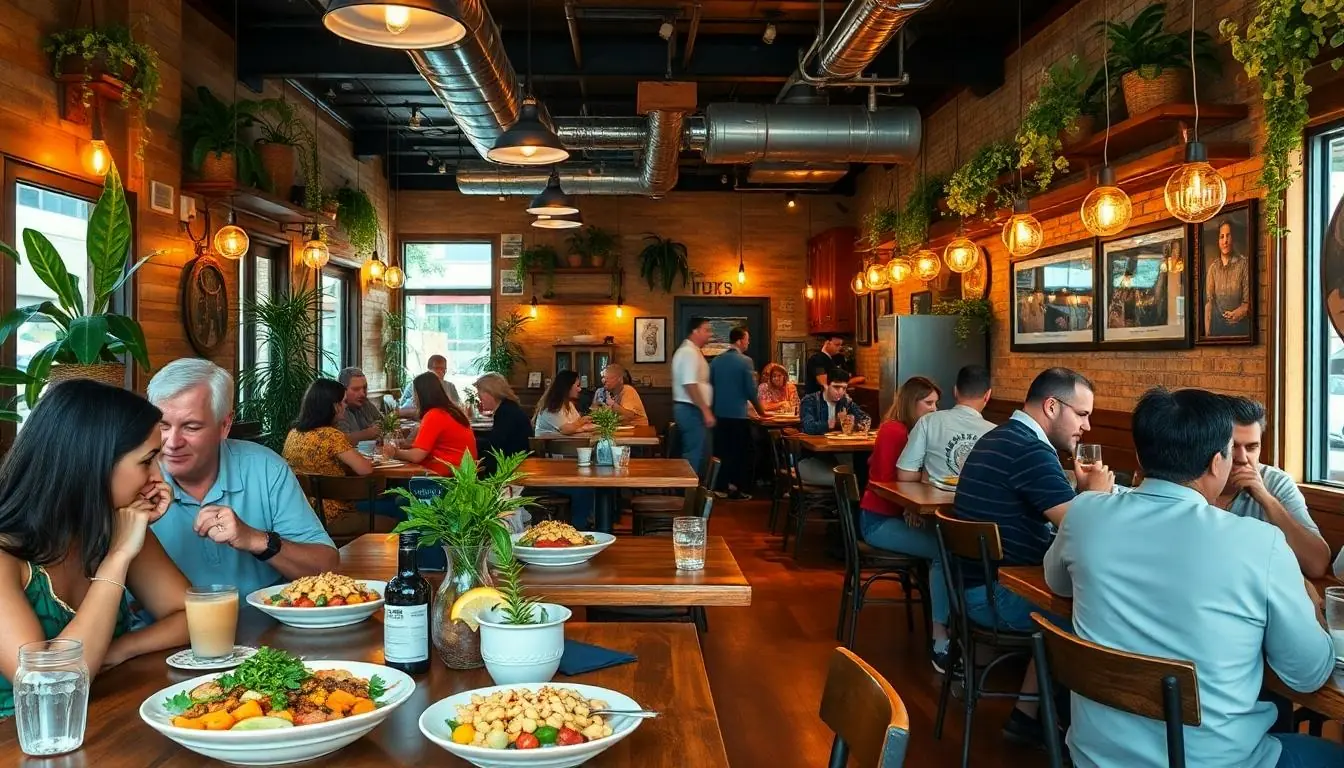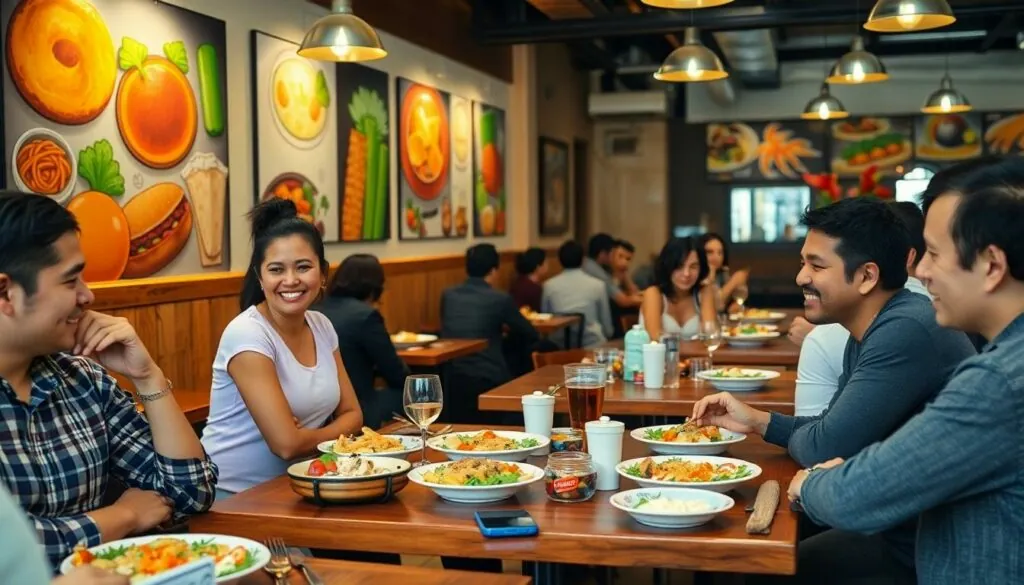In the bustling world of dining, standing out is no easy feat. With countless restaurants vying for attention, mastering SEO is like finding the secret ingredient in a chef’s special sauce. As diners increasingly turn to their screens for food inspiration, restaurants must adapt to the latest SEO trends to ensure they don’t get lost in the digital shuffle.
Table of Contents
ToggleUnderstanding SEO Trends for Restaurants
Restaurant owners face a dynamic digital landscape that requires an understanding of current SEO trends. Prioritizing mobile optimization enhances user experience, as many diners search for restaurants on their smartphones. Adopting local SEO strategies ensures visibility in search results, particularly for nearby consumers.
Online reviews play a significant role in influencing potential customers. Encouraging satisfied diners to leave positive feedback on platforms like Google and Yelp improves a restaurant’s online reputation. Incorporating keywords that reflect these reviews helps search engines associate the restaurant with quality and trust.
Video content has gained popularity among diners seeking engaging and informative experiences. Sharing short clips that showcase menu items or behind-the-scenes kitchen activities can improve online presence. Additionally, utilizing social media platforms to distribute video content increases reach and engagement with a target audience.
Voice search technology is reshaping how customers find dining options. Optimizing content for voice search involves using natural language and phrasing that aligns with common questions diners might ask. Restaurants focusing on long-tail keywords enhance visibility through voice-activated devices.
Image SEO should not be overlooked in a visually-driven industry. Using high-quality images with descriptive file names and alt tags attracts not only customers but also search engines. This visual appeal can significantly influence customers searching for the right dining experience.
Diagrammatic content like menus and infographics can enhance engagement. Cleverly showcasing special deals or events visually encourages sharing and interaction across platforms. Offering downloadable content with these elements can drive traffic, contributing to overall SEO success.
Staying informed about algorithm updates ensures restaurants remain relevant in search rankings. Frequent SEO evaluations and adjustments based on industry trends keep restaurants competitive in their specific markets. Embracing these trends equips restaurants with advanced tools for engaging today’s tech-savvy diners.
Importance of Local SEO

Local SEO plays a crucial role in making restaurants visible in their communities. An effective local SEO strategy ensures diners find nearby options quickly and easily.
Optimizing Google My Business
Optimizing Google My Business (GMB) is vital for local visibility. Restaurants should complete their profiles with accurate information, including name, address, phone number, and hours of operation. Engaging visuals, such as food images and interior shots, enhance appeal. Regular updates about promotions or events keep the listing fresh and relevant. Responding to customer reviews fosters a positive image. GMB insights offer valuable data, helping restaurants understand customer interactions and optimize their strategies accordingly.
Local Keyword Strategies
Local keyword strategies enhance searchability and attract foot traffic. Identifying specific terms that potential diners use, like “best pizza in [city name]” or “Italian restaurant near me,” can drive targeted traffic. Incorporating local keywords in website content, meta tags, and blog posts boosts relevance. Creating content around local events or community happenings provides additional opportunities for engagement. Restaurants benefit from consistent keyword research to adapt to changing search patterns, ensuring sustained visibility in local searches.
Mobile Optimization
Mobile optimization enhances user experience and promotes restaurant visibility. Many diners search for dining options on smartphones. Prioritizing mobile-friendly strategies is crucial for attracting these consumers.
Responsive Design Practices
Responsive design adapts web content to fit various screen sizes. This approach ensures seamless navigation across devices, improving user engagement. Prioritizing quick load times contributes to retaining visitors. Using flexible grids and images allows content to display correctly, regardless of device type. Testing performance on different smartphones helps identify and solve potential issues.
Mobile-Friendly Content
Content tailored for mobile users keeps them engaged. Short paragraphs, concise headlines, and bullet points improve readability. Incorporating local keywords in prominent positions boosts searchability. Clear calls to action encourage users to make reservations or view menus. Regularly updating mobile content keeps it fresh and relevant. Utilizing captivating visuals alongside concise text attracts attention and enhances sharing.
Voice Search and SEO
Voice search is reshaping how diners find restaurants online. This technology focuses on spoken inquiries, emphasizing the need for restaurants to adapt their SEO strategies accordingly.
Adapting to Voice Search Trends
Adapting to voice search trends is essential for restaurants aiming to increase visibility. Many users prefer asking questions rather than typing queries. Consequently, businesses must optimize their content to align with this natural speech pattern. Utilizing conversational phrases and direct questions can enhance search results. Restaurants can also implement featured snippets to provide quick answers, which helps capture the attention of voice search users. Monitoring the rise of smart speakers in households underscores the importance of embracing these changes. Integrating these tactics will likely improve a restaurant’s ranking in voice search results.
Keyword Research for Voice Queries
Keyword research for voice queries involves identifying how potential customers phrase their questions. Long-tail keywords often yield the best results when optimizing for voice search. Specific phrases like “best Italian restaurant near me” should be prioritized in content development. Employing localized keywords that reflect common voice search patterns can boost online visibility. Analyzing query data reveals a trend towards informal language usage, which further supports the need for conversational keywords. Regularly updating keyword strategies to reflect current usage will enhance searchability and drive foot traffic to the restaurant.
Social Media Integration
Social media plays a crucial role in restaurant marketing, enhancing visibility and engagement. Utilizing platforms effectively can drive traffic and build a loyal customer base.
Building a Social Media Presence
Establishing a strong social media presence is essential for restaurants. Consistent posting on platforms like Instagram and Facebook creates a recognizable brand image. Engaging with followers through comments and messages fosters community connections. Sharing high-quality images of dishes attracts potential diners. Highlighting special events or promotions can encourage visits. Utilizing hashtags relevant to local cuisine helps increase discoverability. Regularly updating content keeps audiences informed and engaged.
Influencer Marketing Strategies
Incorporating influencer marketing strategies can significantly boost restaurant visibility. Collaborating with local food influencers allows restaurants to reach wider audiences. Selecting influencers who align with brand values ensures authenticity. Compensating influencers with free meals or exclusive experiences generates content that resonates with followers. Encouraging influencers to share personal experiences fosters genuine engagement with their audience. Hosting influencer events creates buzz and attracts media attention. Measuring the success of campaigns through engagement metrics and foot traffic provides valuable insights for future strategies.
Keeping up with SEO trends is vital for restaurants aiming to thrive in a competitive market. By focusing on mobile optimization and local SEO strategies restaurant owners can enhance their visibility and attract more diners.
Incorporating engaging video content and optimizing for voice search will further position restaurants to meet the needs of tech-savvy customers.
Additionally leveraging social media and influencer marketing can create authentic connections with potential patrons. By staying informed and adaptable restaurants can ensure they remain relevant and appealing in the ever-evolving digital landscape.





